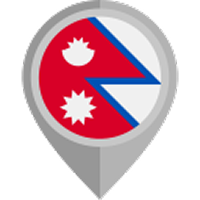Nepal vision | 23/05/2024
You are ready to go on your next trekking journey. The Nar Phu Valley trek offers a raw experience of Tibetan culture along rocky terrain, high passes, and yak pastures. But is the trekking trail easier?
Well, yes, the Nar Phu Valley is moderately difficult. It is suitable for both beginners and experienced hikers.
The Nar Phu Valley Trek is a stunning wilderness experience in Nepal, located between the Annapurna and Manaslu mountain ranges.
To make your trekking experience better, it is essential to understand the difficulty level of Nar Phu Valley in detail. So why wait let us dive right into it
Overview of Nar Phu Valley Trek
The Nar Phu Valley Trek is a rewarding journey into one of Nepal's most remote and unspoiled regions. Located between the Annapurna and Manaslu areas, this trek offers an unparalleled adventure through natural landscapes, traditional Tibetan culture, and ancient Buddhist monasteries.
The trek begins in Besisahar or Chame, initially following the Annapurna Circuit route. Trekkers then divert towards the remote Nar Phu Valley, traversing diverse landscapes, including lush forests, rugged cliffs, and serene alpine meadows.
The route is less visited and offers a more authentic and peaceful trekking experience compared to other popular trails like Everest and Annapurna Circuit.
One of the highlights of the Nar Phu Valley Trek is the opportunity to explore traditional Tibetan villages. The Nar and Phu villages are inhabited by ethnic Tibetan communities that give a glimpse into their unique culture, architecture, and way of life.
You can visit ancient Buddhist monasteries and gompas that serve as centers for religious worship, meditation, and cultural preservation.
How difficult is the Nar Phu Valley Trek?
The Nar Phu Valley Trek is considered a challenging trek that demands both physical and mental preparedness.
The route passes through lush forests and rocky cliffs, with different challenges in each corner. Some sections can be narrow, especially in high-elevation areas where the terrain is more rugged.
The trek involves steep ascents and descents and long walking of 5-7 hours each day, which requires a good level of physical fitness. Further, crossing a high pass like Kang La Pass may cause altitude sickness, as you gain an altitude of more than 5000 m.
At the same time, the weather is quite unpredictable in the area, which can increase the challenges of the trek.
Best Time to Visit Nar Phu Valley Trek
The best time to start on the Nar Phu Valley Trek is during the spring (March to May) and autumn (September to November) seasons. These periods offer clear skies, pleasant temperatures, and breathtaking mountain views of the Annapurna, Manaslu, and Dhaulagiri ranges.
Spring brings moderate temperatures ideal for trekking, while autumn, especially September, offers vibrant landscapes with colorful flowers and clear skies. October and November are renowned for their stunning mountain views.
Further, the Nar Phu Valley is a rain-shadow area, so the trail is quite easy even during the monsoon season (June to August). Winter (December to January) is the least recommended time due to extreme cold and snow, which can hinder crossing the Kang La Pass. However, winter trekking is still feasible with proper preparation.
It's crucial to obtain a special trekking permit and hire a licensed guide or company like Nepal Vision Trek because the Nar Phu Valley is a restricted area.
Tips to Make Nar Phu Valley Successful
- Prepare Physically: Engage in regular cardiovascular and strength training exercises several months before the trek. Focus on building stamina and leg strength to handle the long, steep hikes.
- Acclimatize Properly: Plan for acclimatization days to adjust to the high altitudes. Ascend gradually and be aware of altitude sickness symptoms. Hydrate well and avoid alcohol.
- Pack Wisely: Bring appropriate gear, including warm clothing, sturdy trekking boots, a good quality sleeping bag, and necessary medical supplies. Pack light but ensure you have essentials like a first-aid kit and water purification tablets.
- Hire a Guide and Porter: Consider hiring a local guide for navigation and cultural insights, and a porter to help carry heavy loads.
- Stay Hydrated and Eat Well: Drink plenty of water to stay hydrated and eat high-energy foods to maintain your strength. Take advantage of local tea houses for nutritious meals and snacks.
- Respect Local Culture: Engage with the local communities respectfully. Learn about their customs and traditions, and always seek permission before taking photos of people or religious sites.
- Be Flexible and Patient: Weather and trail conditions can change rapidly, so be prepared for delays and changes in your itinerary. Stay flexible and adaptable to ensure a safe and enjoyable trek.
To wrap up, the Nar Phu Valley Trek presents a captivating and challenging adventure for those who want to explore the hidden treasures of Nepal's Himalayas. With its remote location between the Annapurna and Manaslu regions, the trek offers a unique blend of unspoiled natural beauty, rich cultural experiences, and breathtaking mountain vistas.
However, trekkers must be prepared for the difficulties that come with steep ascents, high altitudes, and unpredictable weather conditions. It's essential to start on this journey during the best seasons, preferably spring and autumn. Obtaining the necessary trekking permits and hiring a licensed guide from reputable agencies like Nepal Vision Trek ensures a safe and well-supported experience.
FAQS








